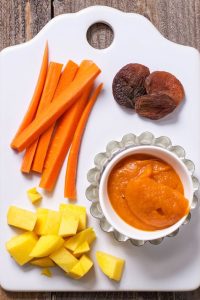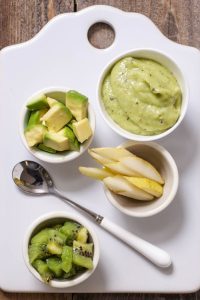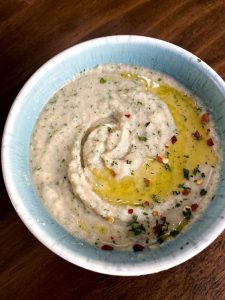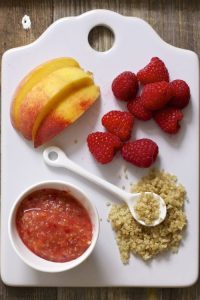Are vegetable puree healthy? Vegetable purees are a common first food for babies. They’re easy to swallow and digest, and they can be a great way to introduce babies to a variety of flavors and nutrients. But are vegetable purees always the healthiest option? Here’s a breakdown of the pros and cons to help you decide if they’re right for your little one.
The Benefits of Vegetable Purees
There are several advantages to including vegetable purees in a baby’s diet:
- Nutrient Rich: Vegetables are packed with essential vitamins, minerals, and antioxidants that are important for a baby’s growth and development. Pureeing vegetables makes these nutrients readily available for absorption.
- Exposure to New Flavors: Purees can help introduce babies to a wide range of flavors, which can help them develop a taste for healthy foods later in life.
- Easy to Digest: Pureed vegetables are smooth and easy for babies to swallow and digest, which is important for babies who are still learning to eat solid foods.
- Variety and Texture: Purees can be made from a wide variety of vegetables, allowing you to introduce different textures and consistencies to your baby’s diet.
Tips for Making Healthy Vegetable Purees
Steam or Roast Vegetables:
Steaming or roasting vegetables helps preserve nutrients.
Skip Added Sugars and Salts:
Avoid adding sugars or salts to vegetable purees. Babies don’t need them, and they can actually mask the natural flavors of the vegetables.
Fresh or Frozen?
Both fresh and frozen vegetables can be used to make purees. Frozen vegetables are a convenient option and can be just as nutritious as fresh.
The Potential Downsides of Vegetable Purees
Are vegetable puree healthy? While vegetable purees have many benefits, there are also some potential drawbacks to consider:
- Loss of Fiber: The process of pureeing can remove some of the fiber from vegetables. Fiber is important for digestion and gut health.
- Limited Texture: Purees are very smooth, which can limit a baby’s exposure to different textures. This might make them hesitant to try more solid foods later on.
- Filling Up on Purees: Babies who rely too heavily on purees may not be getting enough calories and nutrients from other sources, such as breast milk or formula.
Finding a Balance: Purees and Beyond
Vegetable purees can be a healthy and convenient way to introduce babies to new flavors and nutrients. However, it’s important to find a balance between purees and other types of foods. Here are some tips:
- Start with Smooth Purees: Begin with smooth purees and gradually introduce thicker textures as your baby gets older.
- Offer Finger Foods: Once your baby is able to sit up and hold their head steady, offer them finger foods like steamed broccoli florets or soft ripe banana slices. This will help them develop their hand-eye coordination and chewing skills.
- Variety is Key: Offer a variety of purees and other baby-safe foods to ensure your baby is getting a well-rounded diet.
Talk to Your Doctor
If you have any questions or concerns about introducing solid foods to your baby, talk to your doctor or a registered dietitian. They can provide personalized advice based on your baby’s individual needs and development.
Vegetable purees can be a valuable tool for introducing babies to healthy foods. By understanding the pros and cons, and incorporating purees with other types of foods, you can help ensure your baby gets the nutrients they need to thrive.
Making Mealtime Fun and Engaging
Introducing solid foods to your baby is an exciting time! Here are some tips to make mealtime fun and engaging for both you and your little one:
- Let Your Baby Explore: Give your baby the opportunity to touch, smell, and taste their food. This will help them become familiar with different textures and flavors.
- Make it Colorful: Use a variety of colorful fruits and vegetables to create visually appealing meals.
- Sing Songs and Play Games: Mealtime can be a time for bonding and interaction. Sing songs, play peek-a-boo with bites of food, or make funny faces to keep your baby engaged.
- Be Patient: It may take some time for your baby to get used to new flavors and textures. Be patient and offer a variety of foods repeatedly.
Beyond the Spoon: Self-Feeding Options
Are vegetable puree healthy? As your baby develops their fine motor skills, you can encourage self-feeding. Here are some safe and healthy self-feeding options:
- Steamed Veggie Sticks: Offer soft, steamed veggie sticks like broccoli florets or sweet potato chunks. These are easy for babies to grasp and gum.
- Ripe Fruits: Ripe fruits like bananas, avocado slices, or mango chunks are another great self-feeding option.
- Mash Instead of Puree: Instead of a fully smooth puree, mash some cooked vegetables to create a chunky texture that allows babies to practice picking up food with their fingers.
These self-feeding options allow babies to explore food at their own pace and develop important hand-eye coordination skills.
Building a Well-Rounded Plate for Babies
Vegetable purees are a great introduction to nutritious foods, but there’s a whole world of yummy and healthy options for babies to explore! Here are some tips for creating a well-rounded plate for your little one:
- Grains for Growth: Include whole grains like oatmeal, infant cereals, or toast cut into small strips. Whole grains provide essential nutrients for development.
- Protein Power: Lean protein sources like puréed tofu, well-cooked lentils, or finely chopped cooked chicken can be incorporated as your baby gets older. Protein helps build strong muscles.
- Healthy Fats: Don’t forget healthy fats! Avocado, nut butter (spread thin on toast for safety), or yogurt (check for allergens first) can provide healthy fats that support brain development.
Remember, portion sizes are crucial for babies. Start with very small amounts and gradually increase as your baby gets older.
A Well-Balanced Approach to Baby Food
Are vegetable puree healthy? Vegetable purees can be a helpful tool for introducing babies to new flavors and nutrients. However, it’s important to find a balance between purees and other types of foods like mashed vegetables, finger foods, and breast milk or formula. By offering a variety of textures and tastes, you can help your baby develop a healthy relationship with food and set them on the path for a nutritious life.
Remember, every baby develops at their own pace. If you have any questions or concerns about introducing solid foods to your baby, talk to your doctor or a registered dietitian. They can provide personalized advice based on your baby’s individual needs and development.





